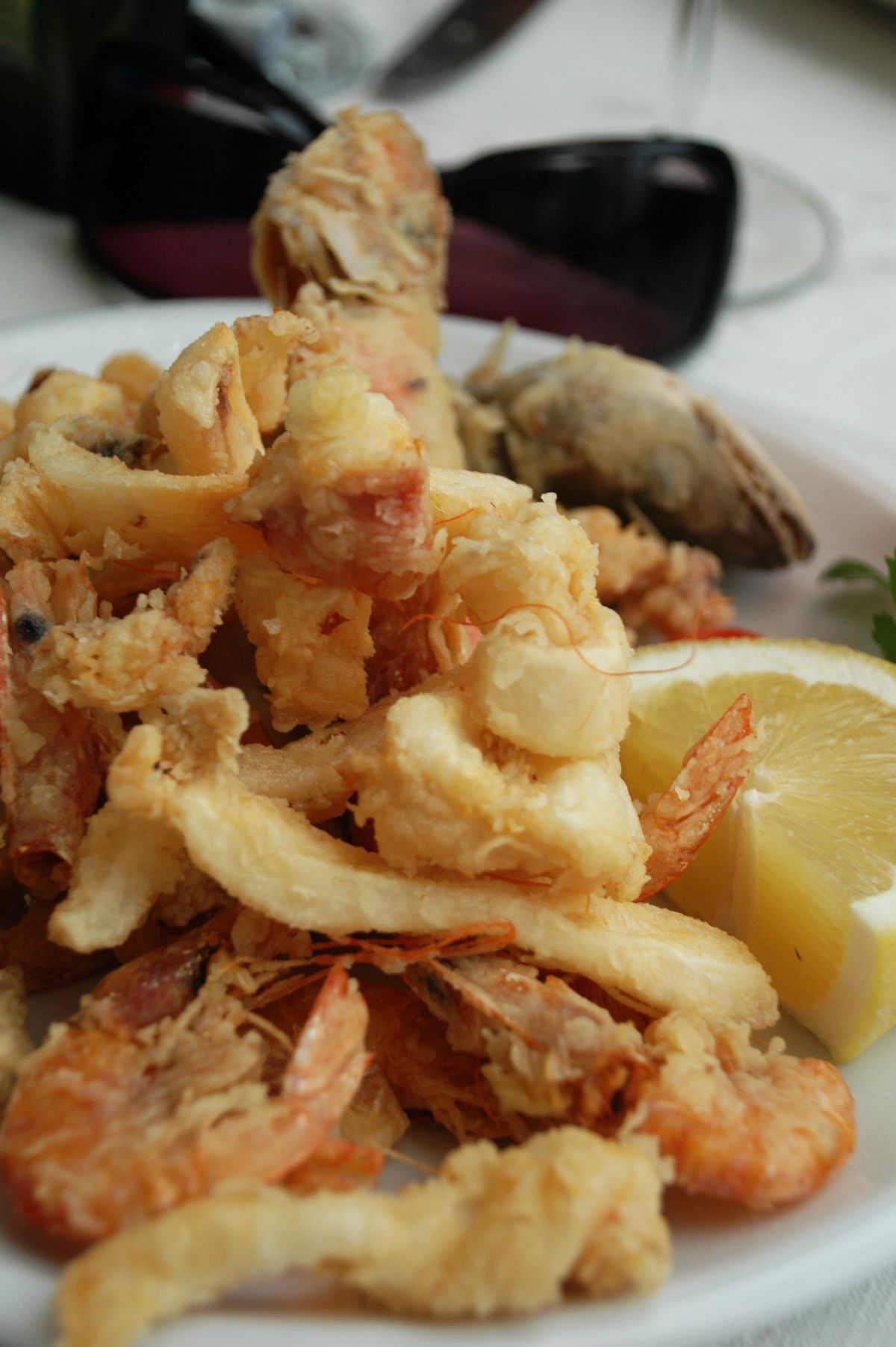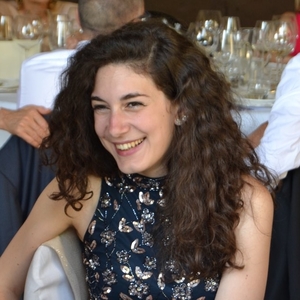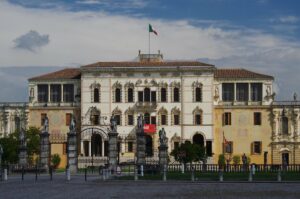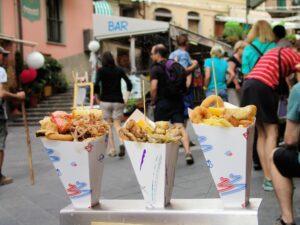Last Updated on December 19, 2025 by | Published: October 26, 2022
Padua, or Padova in Italian, is one of the most dynamic cities in Italy. The youthful energy comes from its huge university, one of the oldest in the world, which calls twenty-something students from all over Italy. If you’re in Venice, we highly recommend visiting this festive city. In fact, Padua is only a 30-minute train ride from the Floating City! From historic sites to delicious food, there are plenty of fun things to do in Padua. Here’s the list of the seven things you have to do in Padua at least once.

Fill Up on Beautiful Art
Padua has plenty of attractions for art history buffs. If you love art, then there are three main sites you must see:
Cappella Degli Scrovegni
The Scrovegni Chapel is a masterpiece from the father of the Renaissance, Giotto. Lushly painted frescoes climb the walls and curved ceilings, making for a truly awe-inspiring experience. It’s no wonder the Chapel is a UNESCO World Heritage site!

Basilica of Saint Anthony
Saint Anthony is so popular in Padua that he is known by the locals as simply Il Santo, The Saint. The whole complex is dedicated to Il Santo, who was known for his many miracles. The Basilica will intrigue architecture lovers with its mix of Gothic and Romanesque styles, while curious travelers will enjoy learning more about the fabled life of Saint Anthony.
Palazzo Della Ragione
Another part of Padua’s UNESCO World Heritage Sites, this impressive palace dates back to the 1100s! Marvel at the high ceilings and history, where thirteenth-century courts had their place.
Insider’s tip: Looking for other cool places in Veneto? Check out our list of day trips from Venice!

Try the One and Only Spritz
Italy is a republic, but Padua is a monarchy, and its king is Spritz. Every day, at every hour, in every season or glass, Spritz is the reigning cocktail in every respectable bar. The classic Spritz recipe is three parts Prosecco, two parts of Aperol (or Campari), and a splash of soda water. But every Spritz in Padua is different depending on the place and the barman’s mood.
Our favorite places in Padua for Spritz are:
- Bar Nazionale, Piazza delle Erbe, 41
- Bacaro Padovano, Via S. Gregorio Barbarigo, 3
- Bar Code, Via Dante Alighieri, 1
Insider’s Tip: If you have time, be sure to try the Spritz at the bars between the three main piazza (Piazze dei Signori, Piazza delle Erbe, Piazza della Frutta) and the ghetto, the ancient Jewish district.
If you’re tired of the same old recipe, you can find a twist to the tradition at La Yarda (Via Dondi dall’Orologio, 1) where you’ll find a colorful jungle of philosophy students. Bar Zanellato (Via dei Fabbri, 22) is another great option with its colorful Spritz.

Find the Bullet Lodged in the Walls of Caffè Pedrocchi
One of the most beautiful places in the whole Padua is Caffè Pedrocchi. It’s a 19-century building, the bar is famous for never having been closed from its opening in 1831 to 1916—not even during the night. Talk about commitment to the cause. A little piece of Italian History was written in this magical bar: the Paduan riots of 1848, part of an insurrectional movement that led to the Independence of Italy, begin here. And you can still find here the first bullet, shot by Austrian gendarmes against a student, that started the riots.
Try the Folperia in Piazza Della Frutta
In the middle of your adventure, you may end up feeling a little… peckish. In Piazza della Frutta there’s a little kiosk that may rest unnoticed by the unaware tourist—but you’re not one of them. Behold the folperia. It’s impossible to translate it with just one word: it’s a little stand that sells fried treats from the Paduan tradition: shrimps, cuttlefish salad, crabs, mussels, and the folpi, musky octopus. Make sure to try at least one traditional recipe before you leave Padua!

Find Your Panino-perfect Match at Dalla Zita
In a city full of students like Padua, it’s only natural that panini have their own art and their own artist. In this case, you can’t miss Dalla Zita (Via Gorizia, 16). It’s a minuscule, wooden place, that you wouldn’t even notice if it wasn’t for the ever-growing line that stands outside this little jewel. When you finally make it to the counter, you’ll find the widest variety of possibilities. With local charcuterie, porchetta, vegetables, and exotic and unexpected flavors, la Zita will always be there to surprise you… and to revolutionize your ideas on panini.
Say Hello to the First Woman Graduate
Did you know that on Venus there’s a crater called Elena Lucrezia Cornaro Piscopia? And its story comes from here, from Padua, and a stubborn girl who lived in the seventeenth century. Elena was a brilliant girl: she could speak six languages and play many instruments. How could she do that? Well, she had a lot of free time: after refusing to marry a German prince, she became a Benedictine nun.
During an age when women couldn’t even enroll in university, she graduated with a degree in Philosophy. And now her coat of arms is painted next to many others in the courtyard of Palazzo Bo, the headquarters of Padua University. You can see it by entering the building—the access to the courtyard is free, but if you want to explore more, book a guided tour of Palazzo Bo.

Celebrate Holy Day: Wednesday!
The most sacred day of the week in Padua is certainly not Sunday: it’s Wednesday. The day where all the students from all different faculties join in the celebration of being young and having a bright future. Nothing is organized: students just get outside and know that they’ll find their old friends and make new ones. There are two main meeting points: the center, with the three main piazze, and the Porta Portello and Piovego: the riverside where, during summer, little bars bloom like flowers and offer music and Spritz.
Here you may find some students still celebrating their graduation. Well, celebrating is a strange word for the goliardia: the honored students are dressed by their friends in funny ways, and forced to read a big paper (a papiro) where they tell all the little mischiefs of the graduated one—rhyming. Even if you’re no longer a student, you shouldn’t miss this opportunity to join the crowd, and find a partner for a sparring match on international politics, goof around, or just sip through the night in the buzzing atmosphere.









